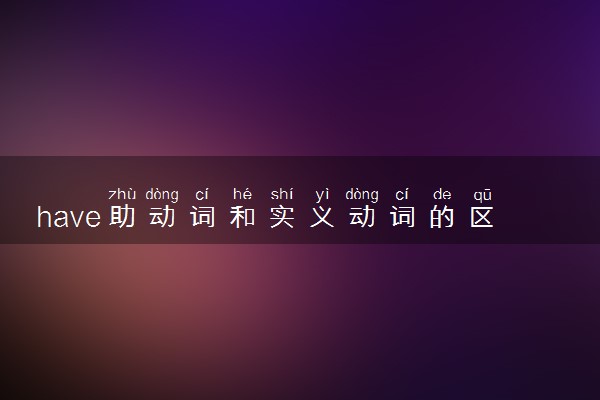have是一个用法相当广泛的动词。它的单数第三人称不像其它动词的第三人称单数那样,在动词原形后面加-s,它的第三人称单数是has。这个动词本身的词义是“有”的时候。

例如:(1)I have a pen.(2)Michael has a new soccer.在由have作谓语的句子变疑问句或否定句时,在美式英语中,无论何种情况,都要借助于助动词do或does。
助动词(auxiliary)主要有两类:基本助动词(primary auxiliary)和情态助动词(modal auxiliary)。基本助动词有三个:do,have和be;情态助动词基本的有十四个:may,might; can,could; will,would; shall,should; must,need,dare,used to,ought to.had better 上述两类助动词的共同特征是,在协助主动词构成限定动词词组时,具有作用词的功能:
1)构成否定式:
He didn’t go and neither did she.他没去,她也没去。
The meeting might not start until 5 o’clock.会议可能直到五点才开始。
2)构成疑问式或附加疑问式:
Must you leave right now?你一定要马上离开吗?
You have been learning French for 5 years,haven’t you?你已经学了五年法语,不是吗?
3)构成修辞倒装:
Nowhere can he obtain any information about his sister.他无处得到他姐姐的任何消息。
Hardly had he arrived when she started complaining.他刚到,她就开始抱怨起来。
4)代替限定动词词组:
A: Who can solve this crossword puzzle?
B: Tom can.
A: Shall I write to him?
B: Yes,do.